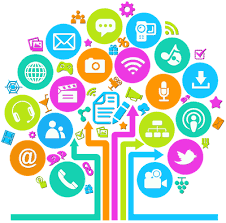Integration is the New Secret Sauce for Event Organizers

There is a lot of technology in the trade show industry today and more on the way. While technology creates opportunities, it also poses challenges. One challenge is how to transform and integrate data from multiple technologies.
Another is the complexity of managing numerous apps and platforms (vs. a single system that does it all), an obstacle that prevents many event organizers from employing new technology.
There are ways to pull it all together and it’s not as difficult as you think.
Avoid Single-Platform Thinking
Today, there is no single, universal software that does everything. There is no one company that automates every task event organizers have to perform in order to plan, market, and execute a show, nor is there one platform that can satisfy the needs of all stakeholders in the event.
The everything-under-one-roof scenario is neither realistic, nor necessary. In fact, it is not recommended. It would take too long to build, be very expensive to use, and remain perpetually obsolete.
Furthermore, many organizers prefer to use multiple “best of breed” applications for specific tasks (one company for event management, but another for the mobile conference directory app) in order to take advantage of new technology as it emerges or comply with internal mandates (the need to lower costs or improve service).
What they dislike is transferring data manually from one application to another and being unable to see relationships across multiple databases. What is much better than a single one-stop-shop platform are multiple platforms that are integrated. Integration—automating and streamlining the flow of data to and from multiple applications and databases—offers the flexibility of multiple technology providers and makes it possible to call up data and insights when and where they’re needed and for specific roles (trade show managers versus sales representatives).
The New Ideal
Open-source integration software can provide trade show organizers with a highly personalized working interface (a dashboard) that transforms and summarizes data into the exact format in which it’s needed and for the specific individuals who require it.
It performs the work of processing data and gathering insights from multiple technology vendors and platforms in the fastest and least painful way possible. With state-of-the-art integration tools, it’s easy to connect systems (registration, event management, or mobile apps, for example), especially if the systems offer open and modern standards-based connectivity. Google, Facebook, Salesforce, Android, and Microsoft are a few of the well-known companies that use open standards to allow other applications to connect with their platforms.
Talend, MuleSoft, and Zapier are a few of the firms offering open-source (and sometimes free) integration software. They make it possible to design, build, and rebuild systems that organizers can use to take advantage of data and new technologies faster, and cheaper than ever before. And because event data and technology change so quickly, it’s critical that organizers be able to evolve continuously.
What Trade Show Organizers Need To Do
First, Trade Show organizers need to stop looking for yester year’s Holy Grail of a single system that does it all.
Second, organizers need to whole-heartedly embrace systems integration and understand that it’s not difficult, expensive, or risky to employ several systems and integrate them.
Third, they have to take control of the data in order to leverage it.
For example:
--Select only those best-of-breed applications that can offer open (no permission or additional tools required to access the data and/or programming code) robust, and rich APIs.
–-Stipulate that both the original data provided to technology providers and the enhanced data created by technology providers remain the property of the organizer.
--Require that all technology providers deliver data back to the organizer in a specific format within a specific time frame.
A trade show organization should think of its enterprise system as comprised of several applications that are plugged into an integrated framework. Any application should, in theory, be replaceable by another similar application with very little work, and with the change being almost unnoticeable to end-users. The sources of trade show data will only increase.
With the Internet of Things (objects transmit data collected via embedded sensors), one day soon objects on the trade show floor will begin communicating just like apps do now. Solutions integration can help organizers unlock the benefits of organized data flows—more efficient operations, fewer resource requirements, more accurate data, higher employee morale, and new business opportunities.


Add new comment